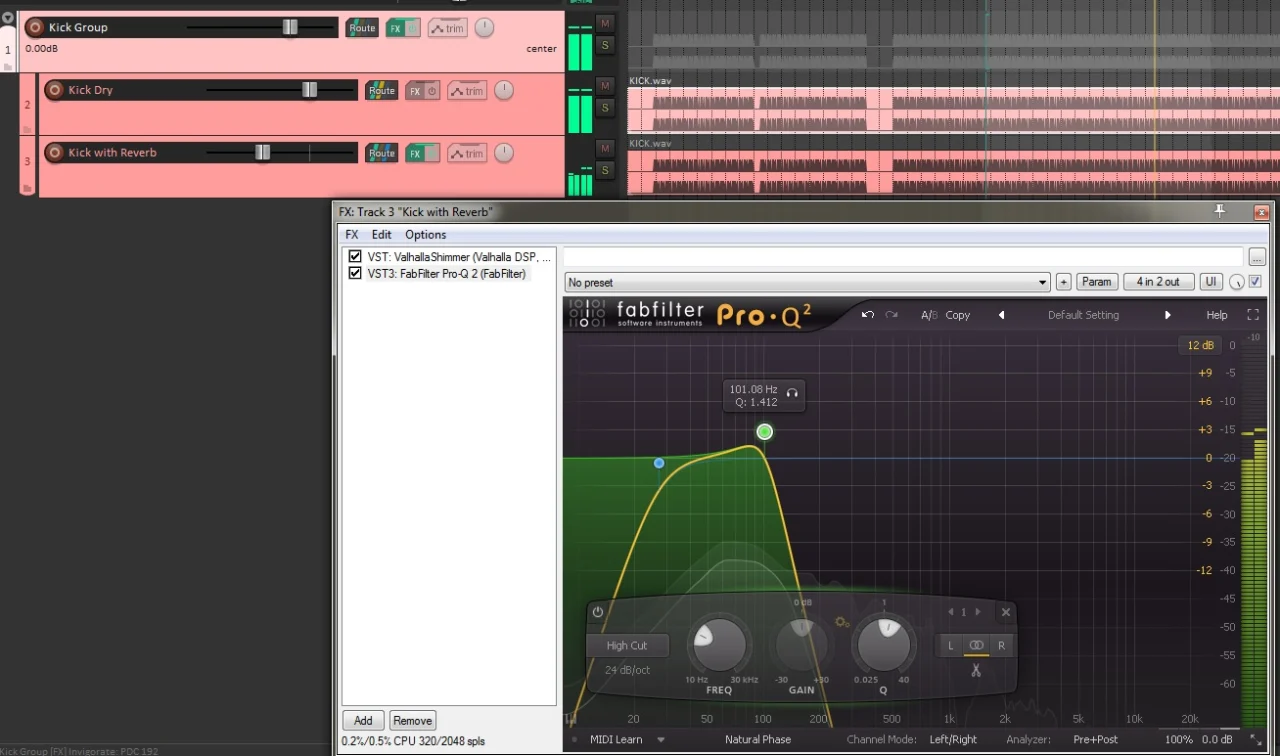Welcome to the world of Techno Rumble, a vibrant audio landscape where creativity and technology intersect. If you’re eager to dive into the realm of sound design and create impactful sound effects, you’re in the right place! This genre not only focuses on danceable beats but also emphasizes the power of soundscapes that can transport listeners into another dimension. Whether you’re a budding producer or an experienced musician, understanding how to manipulate sound will elevate your projects and set your work apart from the crowd.
Essential Equipment and Software

When it comes to crafting powerful sound effects for Techno Rumble, having the right tools at your disposal is crucial. Here’s a rundown of what you’ll need:
- Digital Audio Workstation (DAW): Your first step is selecting a DAW that suits your workflow. Popular options include:
- Ableton Live
- FL Studio
- Logic Pro X
- Pro Tools
- Audio Interface: Investing in a good audio interface can drastically improve sound quality. Look for features like:
- Low latency
- High-quality preamps
- Multiple input/output options
- Synthesizers: Both hardware and software synthesizers can create unique sounds. Some popular options are:
- Serum
- Massive
- Moog Sub 37 (hardware)
- Sample Libraries: Utilize high-quality sample packs that cater to techno. Look for libraries with:
- Drum samples
- Foley sounds
- Ambient loops
- Effect Plugins: Adding effects can transform a basic sound into something powerful. Essential effects include:
- Reverb
- Delay
- Distortion
- Compression
With the right equipment and software, you're well on your way to crafting incredible sound effects that resonate with your audience and elevate your techno tracks. Happy producing!
Understanding Sound Design Basics

When you first dive into the world of sound design, especially in genres like Techno, it might feel a bit overwhelming. But trust me, once you get the hang of the basics, you'll be crafting powerful soundscapes in no time!
First off, let’s break down some key components you should familiarize yourself with:
- Waveforms: At the heart of every sound are waveforms. The most common types are sine, sawtooth, square, and triangle waves. Each waveform has its unique character and timbre, contributing to the overall sound.
- Envelopes: This is where you shape the attack, decay, sustain, and release (ADSR) of your sound. Understanding how to manipulate these parameters will allow you to create sounds that feel alive and dynamic.
- Filters: Filters help sculpt your sounds by letting certain frequencies pass while cutting others. In Techno, you’ll often use low-pass filters to create that classic smoothness in your sounds.
- Effects: Adding effects like reverb, delay, and distortion can take your sounds from basic to breathtaking. Experimenting with different effects can lead to unique sound textures.
One tip is to listen to your favorite Techno tracks and try to identify the different sounds' waveforms, envelopes, and effects. You’ll gain insights into how these components combine to produce that driving, immersive feeling that characterizes the genre.
Creating Basslines and Rumbles
No Techno track feels complete without a captivating bassline and those deep, resonating rumbles that make the dancefloor vibrate. But how do you go about crafting these essential elements? Let’s break it down!
Creating a powerful bassline involves a few crucial steps:
- Choose Your Synth: Start with a synthesizer that you’re comfortable with. It could be a software synth like Serum or a hardware unit like a Moog. Experiment with different synths to find the sound that resonates with you.
- Pentatonic Scale: Many iconic basslines in Techno are based on the pentatonic scale. It produces a clean, driving rhythm that feels natural on the dancefloor.
- Layering Sounds: Don’t be afraid to layer your bass sounds. Start with a fundamental low-end tone and blend it with a higher harmonic to create depth and richness.
- Use Sub-bass: Sub-bass is key to that rumbling effect. Use a sine wave for a solid sub-bass foundation. This low-frequency sound gives your track weight, making it feel powerful and enveloping.
Next, let’s discuss creating rumbles. Rumbles add intensity and can elevate a track's energy:
- Pitch Modulation: Automating the pitch of a sound over time can create dramatic rumbles. Try applying subtle pitch bends using an LFO or an envelope.
- Noise Layers: Incorporate noise sounds and low-frequency oscillations to form your rumbles. This could be white noise, pink noise, or even samples of natural sounds.
- Use Effects Wisely: Reverb and delay can enhance those rumbling effects. Just be cautious not to overdo it; you want your rumbles to support the track rather than drown it out.
So there you have it! With these tips, you’ll be well on your way to creating basslines and rumbles that will shake the floors and hearts of your audience.
5. Layering Sounds for Depth and Texture
Layering sounds is a crucial technique in producing powerful sound effects for any genre, especially in a dynamic environment like Techno Rumble. By blending multiple sounds together, you can create a rich, immersive sonic experience that captivates your listeners.
Here are some key steps to effectively layer sounds:
- Select Complementary Sounds: Start by choosing sounds that complement each other. For instance, if you have a deep bass line, consider layering it with a mid-range pluck sound or a high-frequency lead. The contrast will add depth.
- Adjust Volume Levels: Balance is key. Make sure no single sound overwhelms the others. Use volume faders to adjust each layer’s intensity until they blend seamlessly.
- Panning Techniques: Experiment with panning sounds left or right. This not only creates a wider stereo image but also helps to give each sound its own space, making the overall mix clearer.
- Layering Textures: Try incorporating textured sounds, such as ambient pads or field recordings. These can serve as a foundation under your primary sounds, enhancing the overall atmosphere.
- Automation: Don’t forget about automation. Varying parameters over time can add even more depth and keep your layers dynamic, preventing them from sounding static.
Remember, layering isn't just about stacking sounds; it’s about creating a cohesive sonic landscape that engages and enthralls your audience.
6. Utilizing Effects and Processing Techniques
Utilizing effects and processing techniques can elevate your sound design to new heights in Techno Rumble. These tools help to shape, manipulate, and enhance your sounds, resulting in powerful auditory experiences.
Here are some effective techniques to consider:
| Technique | Description |
|---|---|
| Reverb | Adds space and ambiance, making your sounds feel more alive and spacious. Experiment with different reverb types to find the perfect fit. |
| Delay | Creates echoes and can add movement to static sounds. Try using different delay times and feedback settings for unique textures. |
| Compression | Helps to control dynamics and sustain, ensuring that your sound elements are balanced and punchy while maintaining clarity. |
| Distortion | Adds warmth and character by introducing harmonics. A little goes a long way – too much can cause muddiness. |
Combining these effects with automation can lead to incredible sound transformations. For instance, automating the reverb can make a sound swell and recede, creating a captivating sonic journey. Don’t shy away from experimenting! The world of sound design is as broad as your creativity allows; the more you explore, the more unique your effects will become.
Finalizing Your Sound Design
Finalizing your sound design in Techno Rumble is an exhilarating step—almost like the grand finale of a fireworks show. By now, you’ve experimented with various sounds, textures, and effects, but how do you ensure everything is polished and cohesive? Here’s a roadmap to help you tie it all together:
- Mixing: Start mixing your tracks to balance all elements. Pay close attention to the levels of drums, bass, and synths. You want each sound to blend smoothly while still having its unique presence.
- EQ and Compression: Use equalization (EQ) to carve out space in your mix. This helps eliminate muddiness and enhances clarity. Compression will help to level out dynamics and create a more cohesive sound.
- Reverb and Delay: Add depth and space by applying reverb and delay where necessary. This can help create a sense of atmosphere, making your soundscape feel fuller and more immersive.
- Automation: Utilize automation to bring excitement and movement within your track. By adjusting volume, effects, or panning over time, your sound will evolve dynamically, keeping listener engagement high.
- Final Listening Tests: Play your track on multiple sound systems—headphones, studio monitors, or even your car stereo. This helps ensure your sound translates well across different platforms.
Remember, finalizing sound design is about finding a balance between all elements while ensuring your unique style shines through. Trust your instincts, and don’t hesitate to make bold choices!
Examples and Inspiration
Looking for inspiration when creating powerful sound effects in Techno Rumble? Sometimes, the best ideas come from listening to what others have done. Here’s a list of some remarkable examples and sources to spark your creativity:
- Track Examples:
- Check out tracks by renowned artists like The Chemical Brothers and Richie Hawtin. Their innovative sound designs can provide great insight into crafting atmospheric effects.
- Explore sample packs from platforms like Splice and Loopmasters; they offer high-quality sound effects perfect for Techno.
- Video Tutorials: Platforms like YouTube are treasure troves for sound design enthusiasts. Channels such as Ableton and Sonic Bloom feature tutorials covering everything from basic techniques to advanced sound manipulation.
- Sound Libraries: Don’t forget to dive into sound libraries like Freesound or SoundBible. You can find a myriad of unique samples and sound effects that can enhance your project.
- Live Performances: Attend live techno events or stream performances online. Pay attention to the soundscapes and effects that resonate with you. Jot down ideas that excite your imagination!
Remember, drawing inspiration from others can lead you to develop your unique sound signature. Keep exploring, experimenting, and don’t shy away from mixing different influences!
How to Create Powerful Sound Effects in Techno Rumble
Creating captivating sound effects in Techno Rumble can elevate your tracks and immerse listeners in a rich auditory experience. Here's a comprehensive guide to help you craft powerful sound effects.
To start, consider these key techniques:
1. Understand the Basics of Sound Design
Familiarize yourself with essential concepts such as:
- Waveshapes: Sine, saw, square, and triangle waves each impart different tonal qualities.
- Modulation: Techniques like LFO (Low-Frequency Oscillation) and envelopes can change parameters over time, adding movement to your sounds.
- Effects Processing: Reverb, delay, compression, and distortion can drastically alter your sound.
2. Use Synthesizers Effectively
Synthesizers are crucial tools in Techno Rumble. Here are some tips:
- Experiment with creating basslines using subtractive synthesis.
- Layer multiple synths, adjusting panning and volume for depth.
- Utilize arpeggiators to create rhythmic sequences.
3. Incorporate Field Recordings
Field recordings can add unique texture to your sound effects. Consider:
- Capturing sounds from everyday life, such as machinery or nature.
- Manipulating these recordings through pitch shifting and time-stretching.
4. Automation Techniques
Employ automation to bring life to your sound effects. Focus on:
- Adjusting filter frequencies over time.
- Creating dynamic volume changes to build tension.
5. Mix and Master for Clarity
Ensure your sound effects sit well in the mix by:
- Applying EQ to cut competing frequencies.
- Using compression to maintain level consistency.
- Balancing your sound effects with ambient elements to enhance immersion.
In conclusion, creating powerful sound effects in Techno Rumble requires a blend of understanding sound design, experimenting with synthesizers, and careful mixing. By leveraging these techniques, you can produce vibrant, engaging soundscapes that captivate and energize your audience.
 admin
admin








